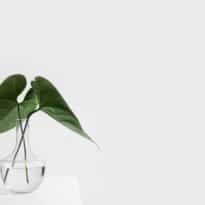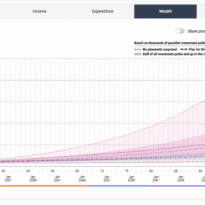Hamish Maxwell, investment specialist on Scottish Mortgage Investment Trust, offers listeners a comprehensive look into the current state of the global markets. The discussion highlights the trust’s core strategies for navigating volatility and adapting portfolios for resilience. Hamish shares insights into sector rotations, geopolitical impacts, and emerging market opportunities that are critical for investors looking to invest over the long term.
Why you should listen to the interview: This episode reveals how to identify sectors ripe with potential, balance risk across global markets, and make informed choices that support long-term growth. Perfect for those seeking to elevate their understanding of today’s investment challenges.
This interview was recorded on 21 October 2024 prior to the US elections. Please note, answers are edited and condensed for clarity. To gain a fuller understanding and clearer context, please listen to the full interview.
Interview highlights:
“Only a few companies actually matter”
“Once you find the companies that you believe in, you have to back them during inevitable periods of tougher performance because active management is ultimately about recognising that most of the thousands of companies in the stock market aren’t actually going to add material value over the very long term. A lot of them are actually being disrupted by new businesses on new technologies.
“So it’s about this idea that only a few companies actually matter. And the evidence is really, really clear on this. A small number of companies create the majority of returns. And for us, that’s really exciting. Our aim is to invest in just those biggest winners. And it means that, if you’re able to do that, returns can be exceptional.
“Taking that five to 10 year view can be really difficult, investing can be emotionally challenging, particularly when you come up against inevitable periods of adverse sentiment. One thing you can do is look for different sources of information. So again, if you want to beat the market and you take different views to the market, and it’s about trying to find people who can help you understand how the world’s changing. So it’s academics, it’s authors, it’s research institutes, it’s thinking about the things that are going to drive change in economies and societies.
“Humans evolution has bestowed upon humans a tendency towards the near term because you’re looking for immediate gratification in your domestic productivity or your agriculture productivity. You’re thinking about one season to the next, the industrial age and the capital age has changed that because we’re doing things on a scale and a timeframe that we never had to before. So it’s about adopting a new way of thinking and avoiding the temptations of the immediate pressures of the market and the immediate stresses.”
The phases of AI
“After decades of science fiction, AI is actually here, computers are doing things at a comparable level of intelligence to us, or superior in some ways, and this is really interesting, it’s really valuable and innovation does drive profits. AI and AI innovation has been a primary contributor to market performance recently, but there are going to be some companies doing it better, creating more value than others. And for us there’s a few phases.
“So phase one is it’s the hardware that makes AI possible. You call them microchips or semiconductors more accurately. But right at the heart of the supply chain, you find three of our holdings. You’ve got Nvidia, which designs the very best chips for AI. You’ve got TSMC that makes chips for companies like Nvidia, and it does so using ASML’s unique machinery. So that’s the very start of the hardware supply chain.
“Next in the supply chain, you’ve got infrastructure. So these are the companies using semiconductors to make the powerful AI models. And these are companies like the cloud providers or the network infrastructure or data analytics or security. And we like companies in this area like Amazon, Meta and Snowflake, for example.
“But then the last phase, the periphery, the visualisation that you suggested in your question. The third phase is the companies that are incorporating AI models into their business models to improve their productivity or grow their revenue. And you’ve got loads of different examples in the portfolio. Tesla is developing autonomous driving, you’ve got Recursion using AI to discover new drugs or Chuan the Chinese local services platform that makes recommendations by AI and optimises delivery routes. So there’s loads and loads of excitement by AI, but for us it always comes back to stock picking what are the companies at a fundamental level using this the best.”
Change drives growth
“It comes back to this idea, change can drive growth, and that’s change in science or technology or new forms of demand or new business models and basically companies that are offering consumers something new and better. And therefore consumers rationally spend their money on that new and better thing. And the company takes market share. And there’s loads of really interesting examples in history, going back to steam power, electricity, flight, telephone, radio, computers, connectivity, these things were really, really valuable for investors. There’s no debating that.
“What’s really exciting for us today though, is that this sort of innovation is taking place today. And for our generation it’s things like artificial intelligence. It’s things like robotics, it’s things like connectivity, genetics, renewables, the future of food. Societies and economies are being changed and change can drive growth. To be really good at this, we try to aspire to push the boundary even further and think what’s the next form of change taking place. And we’ve got some exposure in really pioneering areas like quantum computing with site quantum, that could really revolutionise computing power. A whole new paradigm of computers. You’ve got genetic therapeutics, you’ve got drone delivery with the likes of Zipline.
“That’s the direction of travel we want to see and if we can keep an open mind and if we find the most valuable form of change and we invest in it for the long term, the evidence is clear that your returns can be exceptional and we find that really exciting.”
Conclusion: With a forward-looking perspective, Hamish considers the key themes shaping global markets and offers strategies to enhance portfolio resilience and long-term returns. This episode wraps up with a powerful reminder: long-term growth often lies in consistent strategies and adapting to market dynamics without losing focus.
































